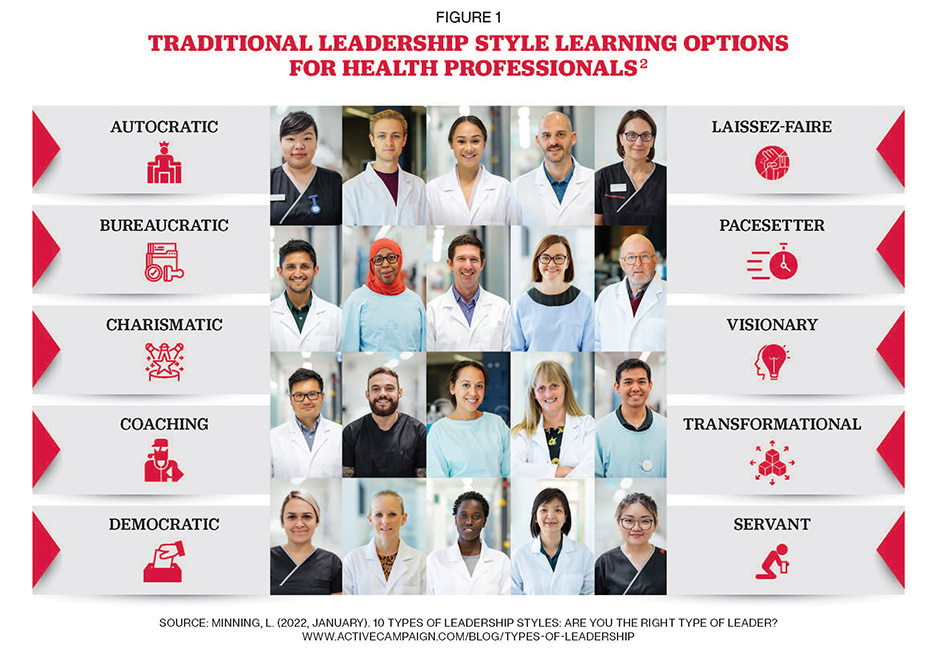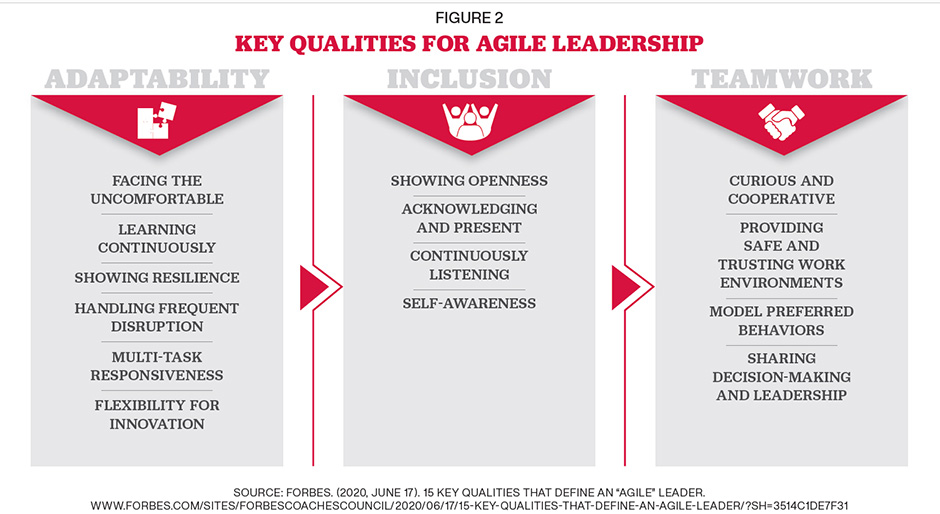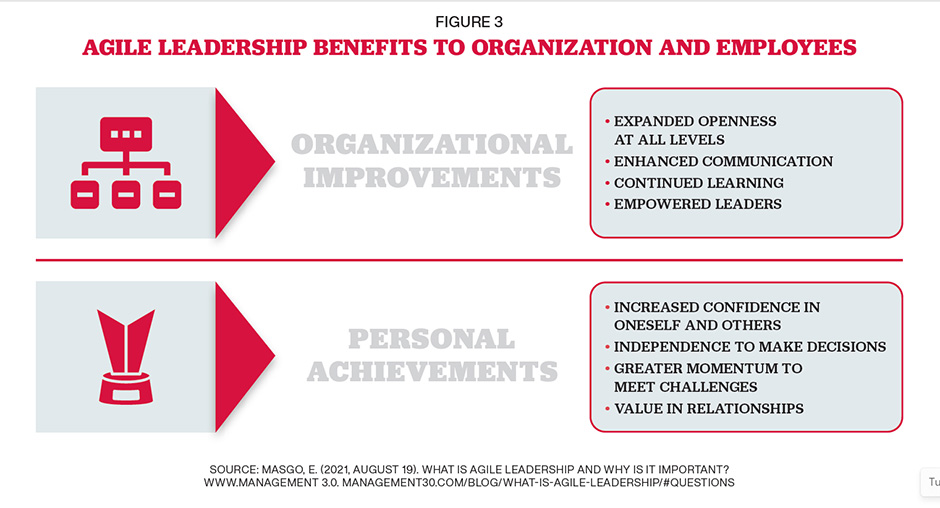Professor Anne Hewitt Extols Agile Leadership for Today’s Healthcare Environment - Seton Hall University
Wednesday, November 2, 2022
Current leadership styles may be mismatched in today’s healthscape.
The Health Sector Leadership Dilemma
Leadership is definitely not easy in the health sector. Surveys regularly report the average length of time a health system CEO remains in office is less than five years, and the industry has a consistent turnover rate of 17-18 percent yearly.1 Given technological advancements, such as artificial intelligence, continuing COVID-19 disruptions, the clinical impact of precision medicine and entrepreneurial companies like Walmart and Amazon entering the health sector, today's health leaders face a never-ending stream of extreme industry challenges. Current leadership styles seem mismatched for today's contemporary healthscape.
Within academia, faculty routinely teach well-known leadership styles to prepare future health providers and practitioners for the unknown. These traditional models range from top-down control approaches, such as autocratic and bureaucratic styles, to more recent options, such as transformational and pacesetter strategies with their clear priorities on goal attainment and improving productivity (See Figure 1).
New and original leadership theories often emerge as responses to challenging situations. Once tried in practice, they either disappear or enter the list of tried-and-true options taught within business administration and health management programs. Contemporary drivers of health sector change, such as health professional shortages, supply chain breakdowns and a majority of patients who have delayed needed health care entering the system daily, require leaders to adopt a more responsive approach — one that provides flexibility, presence and innovation to solve unprecedented situations without a predetermined playbook of strategies.

Agile Leadership Today
Agile leadership skills offer a modern framework for emerging health leaders and managers who have not experienced the top-down decision-making models that today's senior leaders learned and continue to practice. Agile leadership emphasizes characteristics drawn from computer software development strategies of the early 2000s that were designed to deliver products as quickly as possible. Although similar to the wellknown and popular LEAN business model, agile leadership differs substantially because of its primary principles of teamwork and open communication processes for both employees and end-users or consumers. The goal is to remove any consumer barriers or obstacles quickly, receive feedback and continue innovating. In the case of the health sector, the consumer is the patient, and the goal is always a positive health outcome and experience. A major agile leadership objective is to remove any patients' barriers or treatment process "pain points" that traditional and more bureaucratic organizations may lag in overcoming successfully.
Core leadership skills, embedded in agile leadership principles, emphasize adaptability, openness and empowerment of teams. A recent roundtable of CEOs identified 15 key qualities that exemplify an agile leader.3 These executives emphasized adaptability as the skill set necessary for facing continuing disruption, showing resilience and generating innovation. Other leadership traits associated with agile leaders included demonstrating capacity to accept shared decision-making with others by empowering teams to work in inclusive environments (See Figure 2).
Aligning Agile Leadership With The Health Sector
Why is agile leadership a match for future health sector professionals? The core set of traits identified in Figure 2 relate to essential skills taught to all types of healthcare providers and practitioners regardless of their chosen vocation or their health practice site. Three brief health organization examples show direct application of agile leadership concepts and competencies.
Health Care is a Team Sport
Given the incredible responsibility and accountability that accompanies caring for
another human being's health, it is not surprising that few other industry sectors
require the level of integration and trust among team members. They must function
effectively and efficiently for the sole purpose of ensuring a patient's positive
health outcome. Agile leaders empower team members to create an environment of openness
by fostering trusted communication channels and enhancing transparency of work without
fear of retribution. A typical healthcare team can include as many as 10 different
healthcare professionals, ranging from physicians or physician assistants; nurse practitioners
or nurses; pharmacists; specialists; physical, occupational or speech therapists;
technicians; patient navigators or community health workers; and the administrative
support staff and healthcare managers. Imagine a football field diagram, but this
time insert all the health professionals identified above as team players with the
same goal of improving the patient's health. Inclusion, cooperation and openness remain
essential leadership characteristics.
The CEO is Probably Not in the Emergency Department
Critical decisions involving health consumers/patients happen in real time. Everyone
has a specific role, and the majority of team members will have completed advanced
degrees and are specialists in their field. Healthcare provider teams operate within
a scope of practice, but they also daily face process and procedure questions that
lack clarity or strategic guidelines. Agile leadership empowers team leaders to resolve
these situations by encouraging shared decision-making. In the case of health care,
the quarterback changes often, based on the patient's needs, and the coach usually
remains on the sidelines. Shared governance contributes to quicker healthcare decisions
for the patient's benefit.

The Incredible COVID-19 Health Sector Pivot
The COVID-19 challenge may be remembered as the transformative period that changed
American health care in the 21st century. The pandemic challenged significant components
of the entire American healthcare system and spiraled into a scenario never before
imagined. Within two weeks, the entire "game" was no longer the same. Despite incredible
and unimaginable barriers, healthcare systems converted to untried and unknown innovative
care models. How was this possible? Experts suggest that the crisis thinking allowed
leaders to disregard previous strategies and processes and to consider "what if" and
"will this work" scenarios. American health systems completed the task of transforming
cafeterias into viable acute care units in the space of two days and then provided
thousands of vaccines to the public in their parking garages. Technology advances,
already available but not widely used, permitted healthcare employees to work remotely
and health practitioners to consult with their patients via telehealth. The COVID-19
pivot proved that the health sector could readily adopt innovation and transformation.
Today's health leader recognizes that the agile leadership capabilities of resilience,
innovation in the face of multiple disruptions and the ability to face uncomfortable
scenarios were essential to the COVID-19 pivot.
Benefits of Agile Leadership
The health sector in the 21st century expected change to be a constant due to recent technology applications, genetic discoveries and population health's emphasis on value-based outcomes. Leaders intended to rely on change management models proven useful in past transitions. But these frameworks often focused on a single project or process change and lack the adaptability for handling multiple initiatives. The agile leadership framework offered strategies appropriate for multitasking transformations needed to survive and succeed during these last few years. As outlined in Figure 3, the benefits of agile leadership can be categorized as positive for both organizational and personal outcomes4 (See Figure 3).
Seton Hall's School of Health and Medical Sciences: Championing Agile Leadership Learning
Today, we know that agile leadership skills are applicable for the early careerist as well as the seasoned C-suite executive. How does Seton Hall encourage students to develop the desired characteristics such as teamwork, inclusion and adaptability? First, the Center for Interprofessional Education in Health Sciences (CIEHS) offers collaborative workshops and learning modules for six graduate programs in the School of Health and Medical Sciences. Students from physician assistant, physical therapy, occupational therapy, athletic training, speech and language pathology and the master's in healthcare administration (MHA) programs combine to learn in diverse groups throughout their curriculum. One of the four core signature experiences involves students examining a medical error video case and then applying the TeamSTEPPS® approach.5 TeamSTEPPS®, a nationally recognized, evidence-based training program, aims to improve team performance of healthcare professionals, and helps students learn to respond quickly and effectively to whatever situations arise. This learning opportunity mirrors the agile leadership skill sets of teamwork, inclusion and innovation.
A second opportunity to develop agile leadership skills is available for MHA students who enroll in an emergency management for health professionals' course. Using the Simulation Center at the Interprofessional Health Sciences campus in Nutley, graduate students experience a full-fledged health system crisis when their "hospital" loses its internal computer network, and the system immediately loses access to patient medical records, medications and all internal communication networks. Based on the Hospital Incident Command System (HICS) decision-making frameworks, students collaboratively adapt and develop innovative processes to assess the crisis and maintain operating capacity. Flexibility, adaptability and the capacity to address uncomfortable situations relate directly back to agile leadership competencies.

Summary
Will agile leadership be the panacea for future health sector leadership? Today's health practitioners can expect continuing and emerging mega-challenges to occur on a regular basis given rapid industry environmental and regulatory changes. The diverse and continuing challenges of the past few years suggest that the benefits of agile leadership can be instrumental for future health professional leaders as they develop valuable skill sets that lead to innovation and better health outcomes for all.
About the Author
Anne M. Hewitt, Ph.D., M.A. is professor and acting chair for the Department of Interprofessional Health Sciences and Health Administration. She is also director of the Elizabeth A. Seton Institute for Community and Population Health. She received her Ph.D. in Health Sciences from Temple University, her M.A. from Immaculata University and her B.S. in Interprofessional Health Sciences from Otterbein University.
This article originally appeared in the Fall 2022 issue of In the Lead magazine, from The Stillman School of Business and its Business Leadership Center. The bi-annual magazine focuses on leadership perspectives from the field of health care, with content that is curated from leaders across the industry who share lessons learned from real-world experiences.
Notes
1 Michael Kelly Associates. (n.d.) Hospital CEO turnover rates remain at higher levels.
Is your hospital prepared? www.michaelkellyassociates.com/blog/hospital-ceo-turnover-rates-high-levels
2 Minning, L. (2022, January). 10 types of leadership styles: Are you the right type
of leader? www.activecampaign.com/blog/types-of-leadership
3 Forbes. (2020, June 17). 15 Key Qualities that define an "agile" Leader. www.forbes.com/sites/forbescoachescouncil/2020/06/17/15-key-qualities-that-define-an-agile-leader/?sh=3514c1de7f31
4 Masgo, E. (2021, August 19). What is agile leadership and why is it important? Management
3.0. www.management30.com/blog/what-is-agile-leadership/#questions
5 TeamSTEPPS® Pocket Guide App. Content last reviewed April 2018. Agency for Healthcare
Research and Quality, Rockville, MD. www.ahrq.gov/teamstepps/instructor/essentials/pocketguideapp.html
Categories: Business, Health and Medicine






